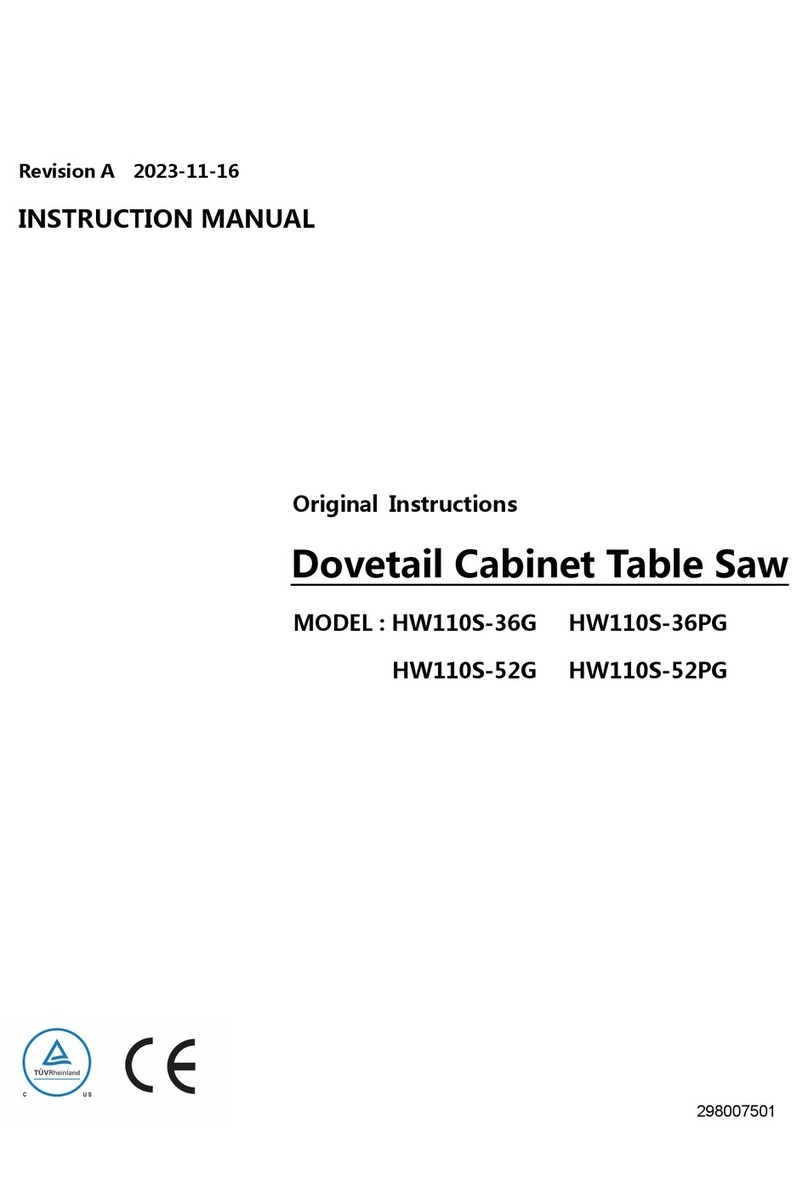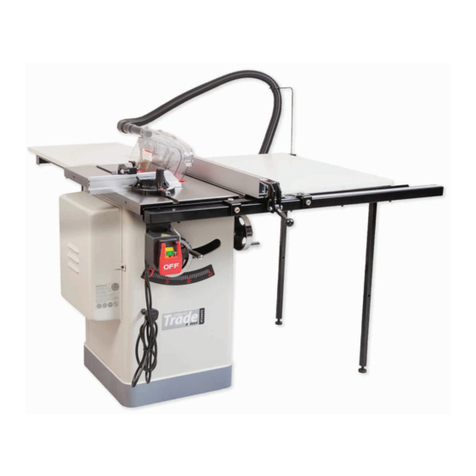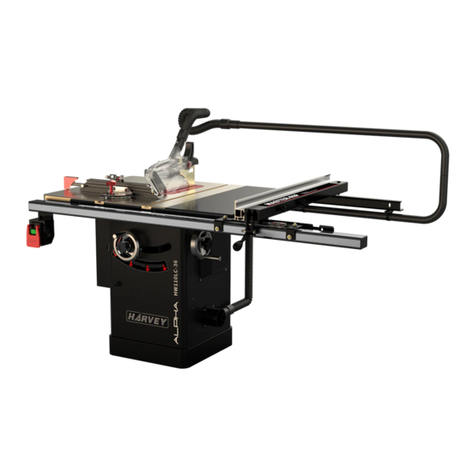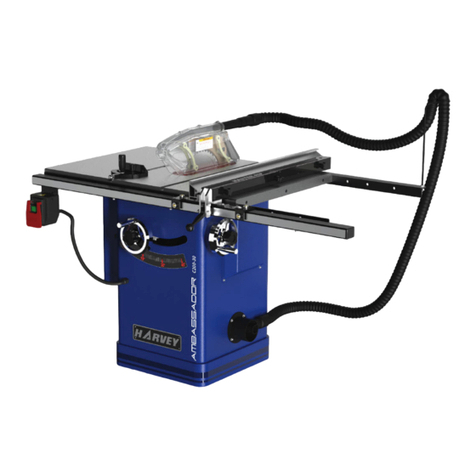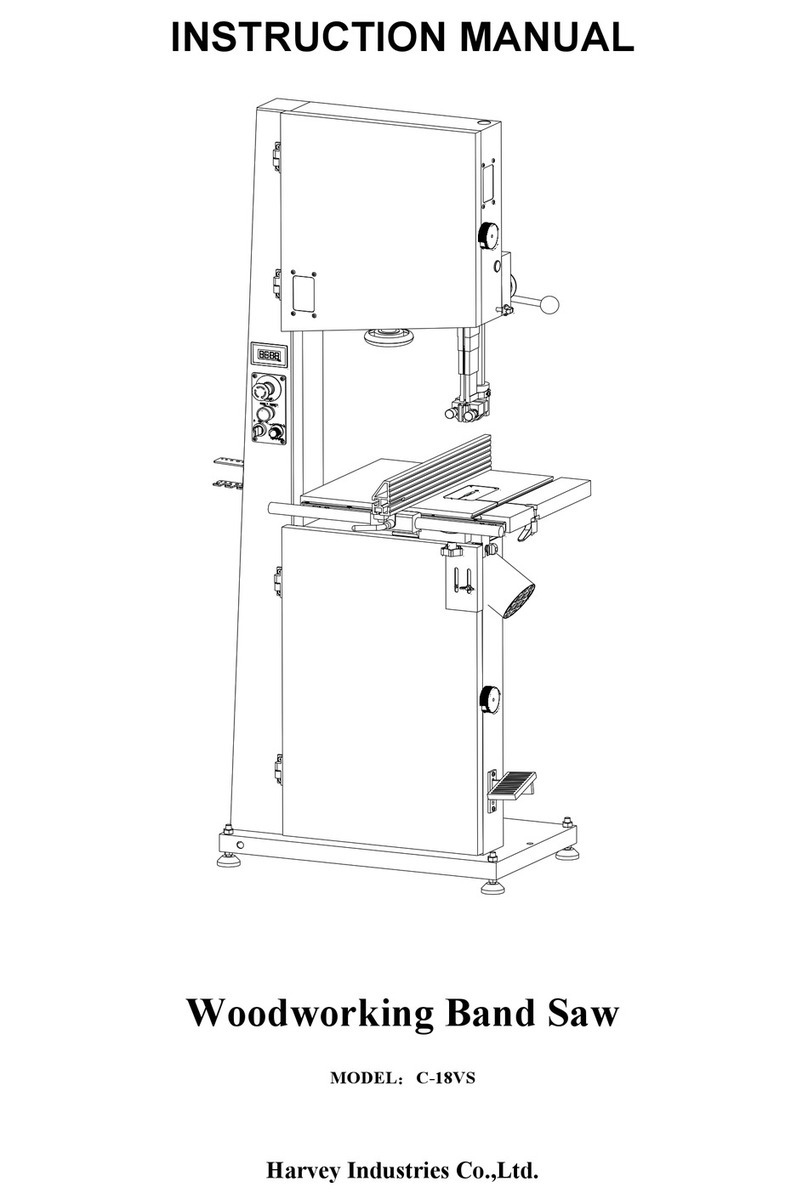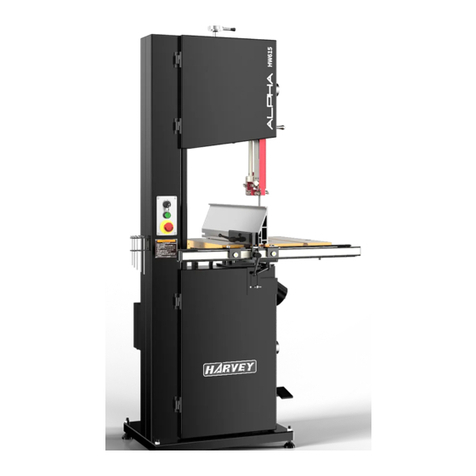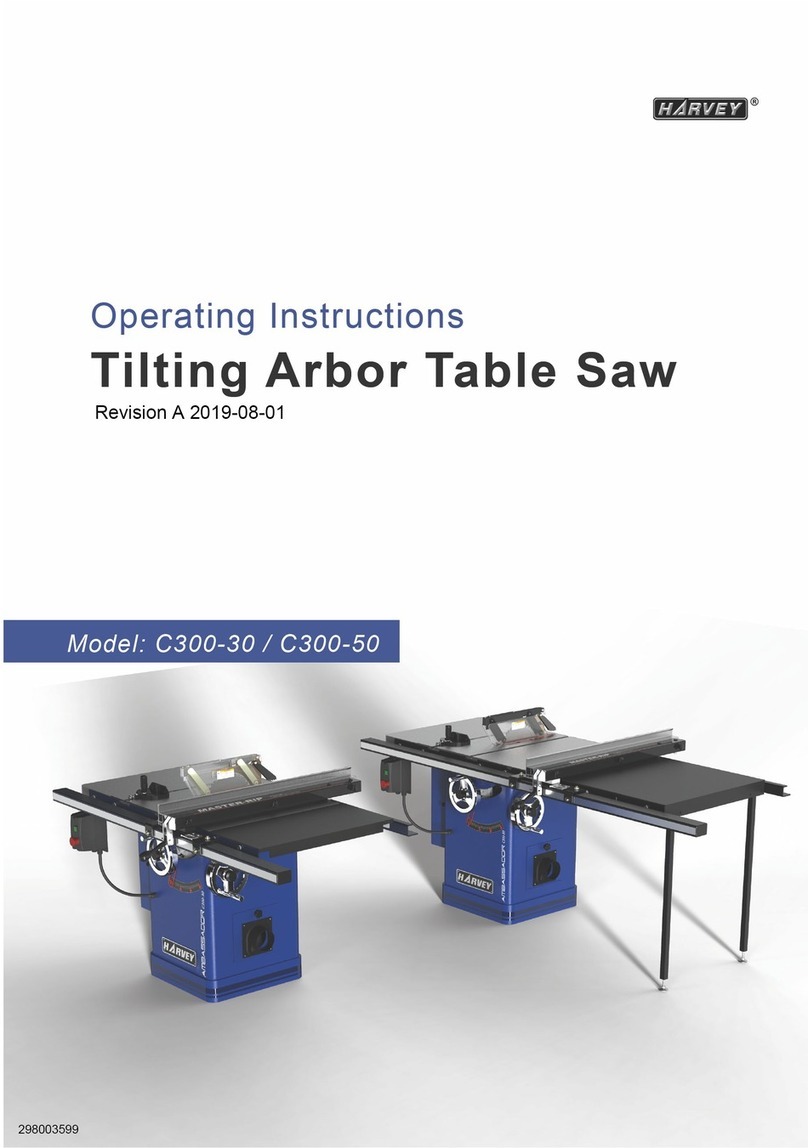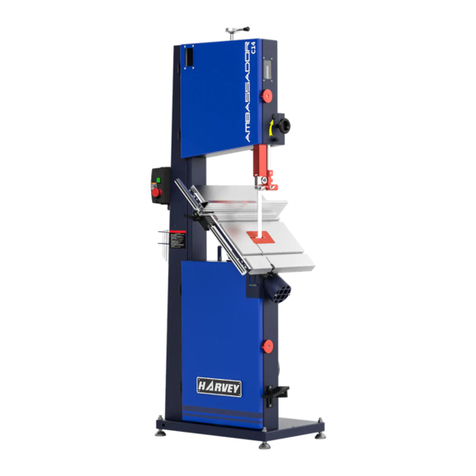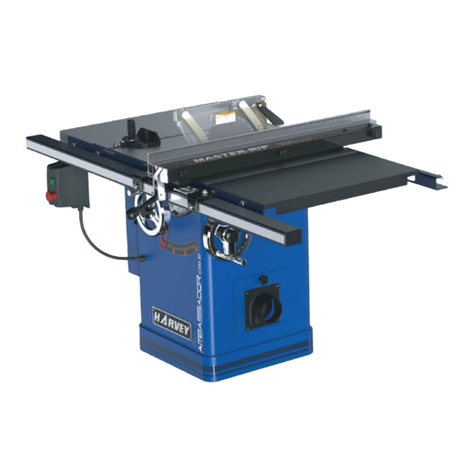
- 7 -
3.2 Intended Use
HPS1600E & HPS1300E Sliding table saw and the workpiece guide equipment supplied
with it are intended to be used exclusively for the following purposes:
● Laminated and unlaminated board materials (e.g. chipboard, coreboard, MDF board, ...)
● Solid wood
● Gypsum plasterboard
, Cardboard, Veneer with a suitable clamping device
● Dimensionally stable plastics (thermoset plastics, thermoplastics).Sawing these materials does
not normally involve any risks in respect of dust, chips, and thermal degradation products.
Tools:
● The chosen saw blade must be suitable both for the specific work cycle and for the specific
material.
● Only circular blades which are solid chrome vanadium (CV) or tungsten carbide tipped (TCT)
and have a diameter of 315mm , arbor size 30mm,as well as a maximum width of 20mm are
allowed for the main saw
● Blades with a diameter of 120mm,arbor size 20mm
are allowed for the scoring saw.
● Saw blades made of high-alloy high-speed steel (HSS) are not allowed to be used.
● Saw blades and their fixing devices shall conform to EN 847-1:2005。
Site of installation/use:
● The machine is not suitable for use outdoors, or in rooms that are subject to moisture or the risk of
explosions.
● The intended use of the machine involves connection to a suitably dimensioned extraction
system .
● Intended use also involves compliance with our specified operating, maintenance and repair
conditions and the safety information contained in the operating instructions.
● The sliding table saw may only be used, set up and maintained by persons who are familiar with
the machine and aware of the dangers.
● The pertinent accident prevention regulations as well as any other generally recognised technical
safety and industrial medicine rules must be observed.
● Repair work must be carried out by our own customer service or by an organization that we have
authorized. Only original spare parts are allowed to be used for this. we will assume no warranty
for any damage that is caused by using non-original spare parts.
Machine operator positions(Fig.1)
The sliding table is intended to be operated from the following positions:
●On the left of the sliding table at the front of the machine, seen in the
feed direction (main operator position).
●At the front cross-end of the machine on the right of the sliding table
when working with the rip fence
● Any person removing the workpieces must stand at the rear
cross-end of the machine behind the main table length extension (under
no circumstances in the sliding table traverse area).
Fig.1
The machine is prohibited to be used in a potentially explosive atmosphere!
